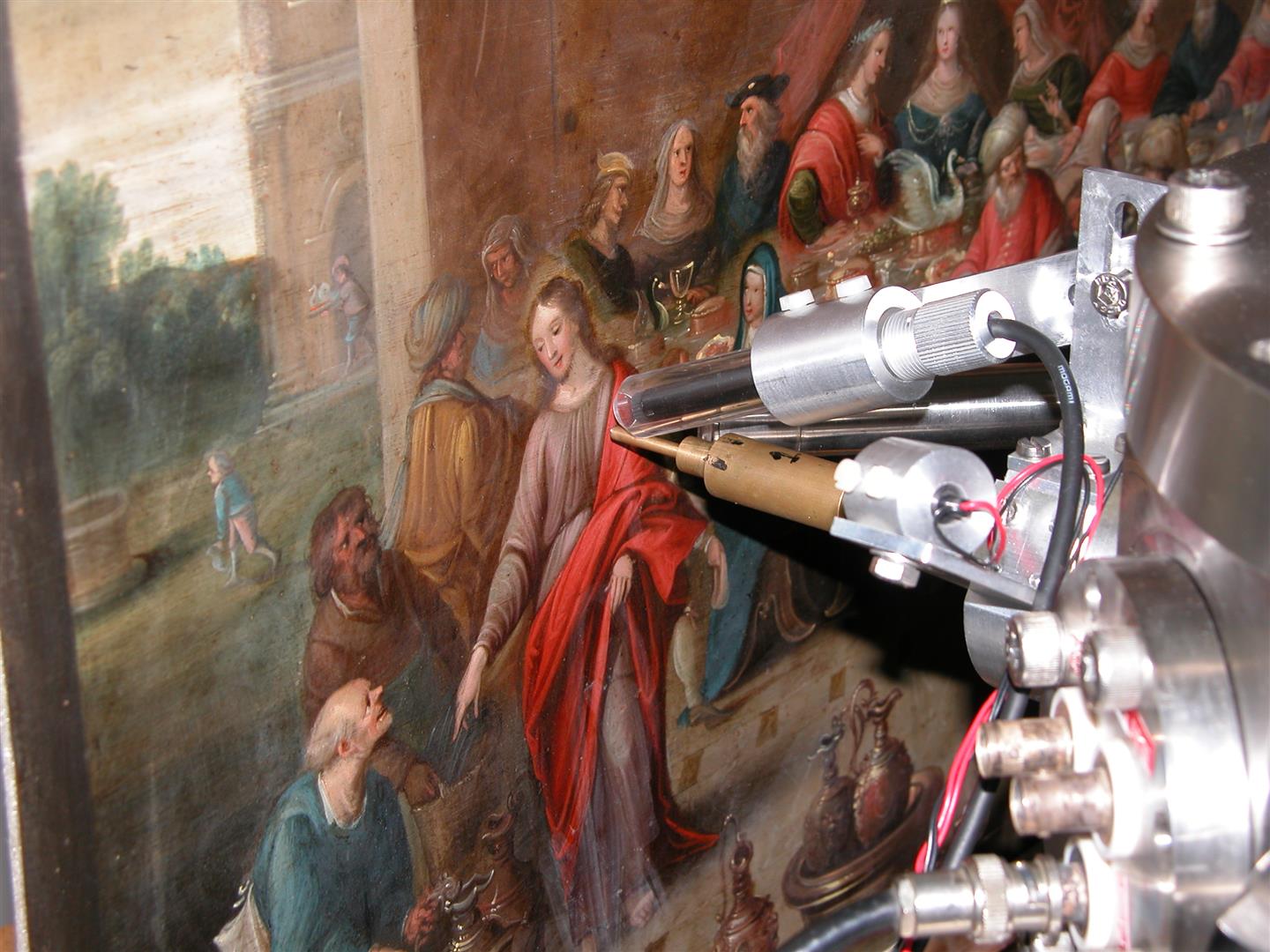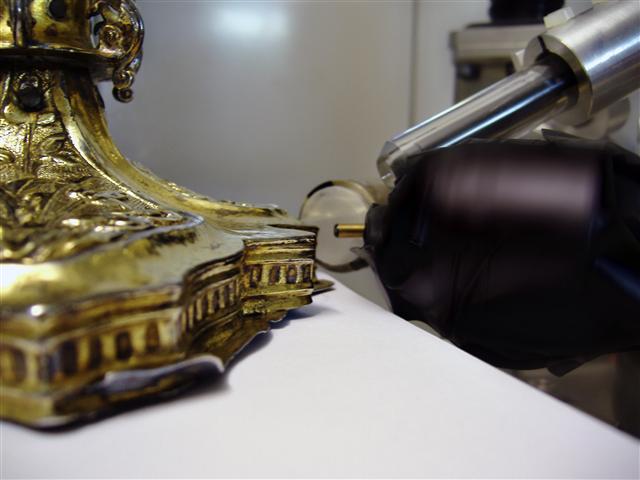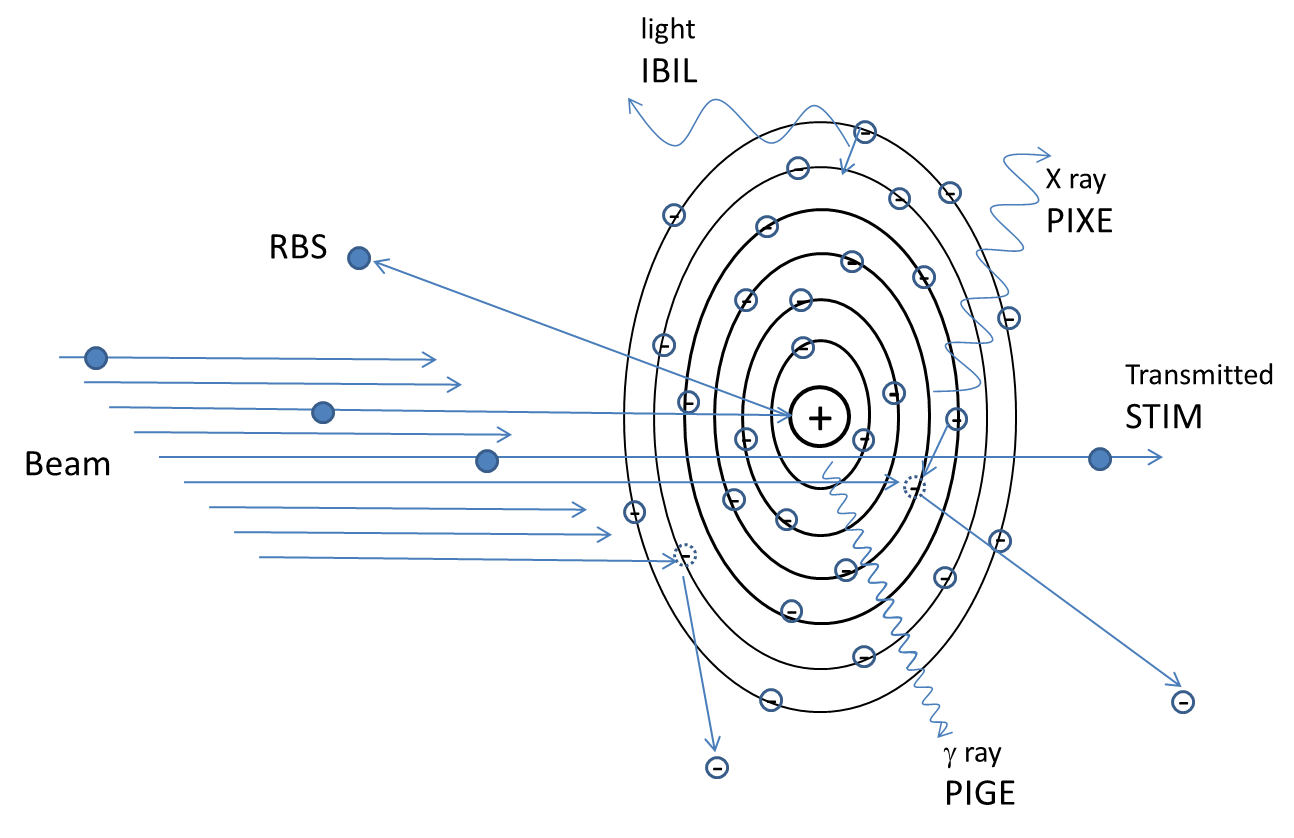External Beam - Microprobe Facility
1. Description

Please click on image to zoom in.
The external microbeam analytical end-station is an extension of the existing microprobe. It allows doing IBA measurements in open air, without the need of vacuum and then, no sampling is needed. Among the information that can be obtained using IBA techniques, we can highlight:
- identification and quantification of major, minor and trace elements;
- 2D elemental distribution;
- elemental profiles concentration.
IBA techniques using the external beam are mainly used to characterize materials from cultural heritage in order to, for example:
- Restoration processes (original materials identification);
- Surface treatments;
- Degradation and corrosion surfaces studies;
- Elemental concentration comparison with coeval objects, etc.
The microbeam allows us to obtain this information in almost all kind of objects (metals, ceramics or glass) without sampling.

Please click on image to zoom in.
For further information, see a PIXE for cultural heritage or contact us.
2. Equipment
The available equipment at the LATR associated to the 2,5 MV Van de Graaff Accelerator are the following:
- Oxford Microbeams® Ionic Microssonda;
- External microbeam analytical end-station.
There are several IBA techniques available, for example:
- PIXE (Particle Induced X-ray Emission);
- PIGE (Particle Induced Gamma-ray Emission);
- RBS (Rutherford Backscattering Spectrometry);
- IBIL (Ion Beam Induced Luminescence).

Please click on image to zoom in.
2. The Beginning
The external beam was installed in the frame of the MicroFex project, co-financed by Fundação para a Ciência e a Tecnologia (FCT) and FEDER, through POCI 2010 Program.
The project was focused on bringing the capabilities of the analytical ion microprobe to other fields of study, namely those that by their own nature involve the characterization of objects or artefacts that cannot be altered by the analytical methods employed, or cannot be confined to vacuum chambers, etc. This is a problem of frequently difficult resolution since the conventional analytical techniques usually employed either have poor or even none at all the spatial resolution – laterally and in depth – necessary for the analysis of compositionally structured surfaces, or demand previous preparation that induces permanent changes in the objects to be analysed.
Details:
R&D Project co-financed by Fundação para a Ciência e a Tecnologia (FCT) and FEDER, through POCI 2010 Program:
- Name: To Install a Microbeam End-station at the Nuclear Microprobe Facility (MicroFEx).
- Project Reference: POCI/CTM/60685/2004.
- Coordination Researcher: Rui Manuel Coelho da Silva.
- Promoted Institution: Instituto Tecnológico e Nuclear (ITN/MCTES).
- Starting Date: 04-07-2005.
- Ending Date: 31-12-2008.
- Total Funding: 76.000,00 €.
